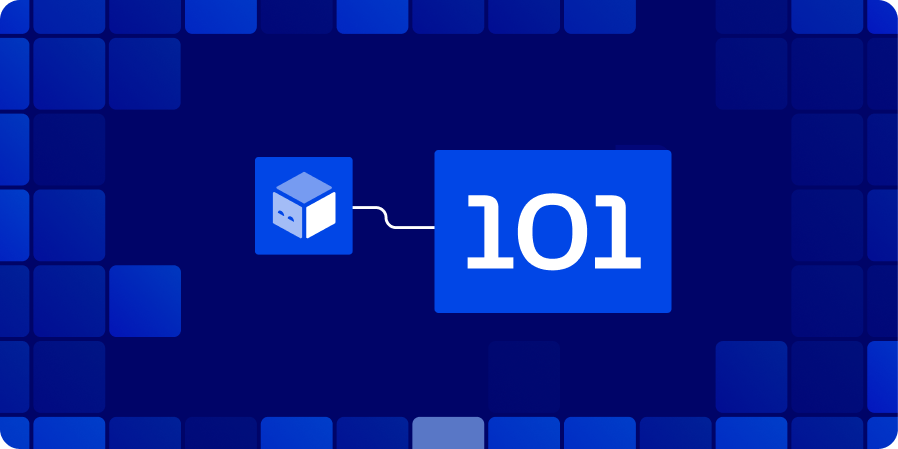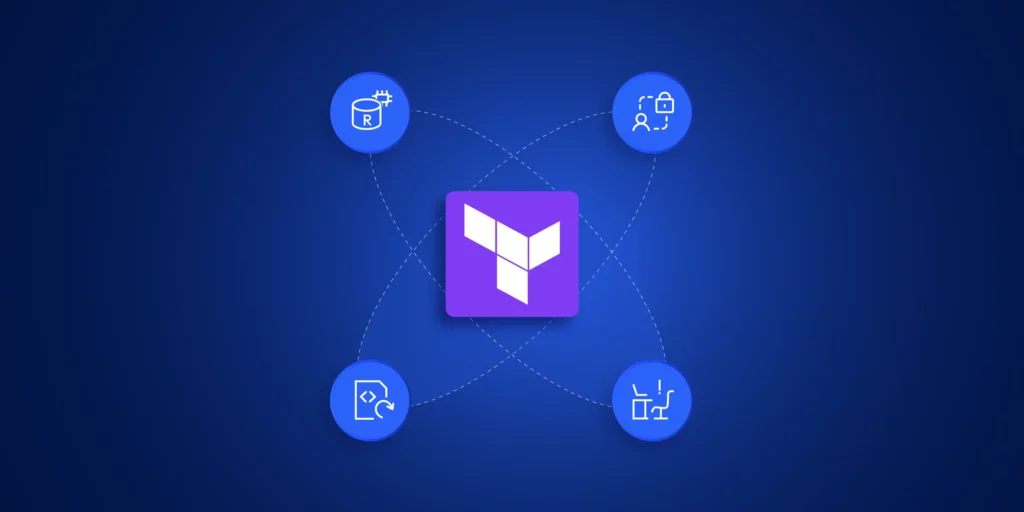For those that do not know, the terraform opensource project OpenTofu is a fork of HashiCorp Terraform that preserves the familiar declarative syntax and workflow of Terraform while introducing a truly open-source terraform license (Mozilla Public License 2.0) and a vendor-neutral home under the Linux Foundation.
Launched in late 2023, it has matured rapidly: it now counts about 3,900 providers, around 23,600 modules, and a GitHub community that ships new features roughly every 3–6 months. OpenTofu 1.9 and the just-announced 1.10 beta deliver capabilities such as:
- Provider iteration
- Resource exclusions
- State encryption
These features address long-standing requests frequently raised by Terraform users in community forums and issue trackers.
In fact, hundreds of individuals and more than 100 companies signed the OpenTF Manifesto when it was published in September 2023, pledging to maintain an open-source Terraform alternative. Additionally, in April 2025 the Cloud Native Computing Foundation (CNCF) accepted OpenTofu as a Sandbox project, confirming its momentum in the cloud-native ecosystem and guaranteeing that its direction is set in the open and steered by the community rather than any single vendor.
New to OpenTufo – Learn More:
-
The Definitive Guide for Shifting from Terraform to OpenTofu →
How to migrate your TF to OpenTufo fast and easy
-
OpenTofu Multi-Cloud →
3 IaC Challenges It Solves Across AWS, Azure & GCP. OpenTufo can run Multi Cloud and Multiregional. Read this guide
-
Top 7 OpenTofu Errors →
Our CTO Collocated 7 Errors he keep seeing again and again and how to face them
Why OpenTofu is the Leading Terraform Open-Source Alternative
The IaC landscape is rapidly evolving. This includes:
- Multi-cloud architectures
- Platform engineering
- AI-driven automation
All of this demands tools that teams can extend and audit. Therefore, OpenTofu, this terraform opensource alternative, provides a permissive license and transparent governance. This ensures:
- Transparency – every line of code, discussion, and roadmap item is public, reducing vendor lock-in risks.
- Flexibility – anyone can fork, patch, or embed OpenTofu in bespoke pipelines, something increasingly important as organizations build internal developer platforms.
- Future-proofing – licenses cannot be unilaterally changed; the project’s Linux Foundation and CNCF status guarantees that the community will always have write access and release rights.
By doing so, anyone can actively contribute to OpenTofu to ensure it caters to the communities needs.
Industry commentary—such as InfoQ’s coverage of recent OpenTofu releases—highlights the project as an emerging IaC option for 2025, alongside AI helpers and multi-tool orchestration.
Key Features of OpenTofu: The Terraform Opensource Alternative
At its core, OpenTofu remains fully Terraform-compatible, proving that a robust terraform open-source solution can match proprietary tools.However, as a leading open-source terraform alternative, it brings extra power and flexibility. Some of its core features that helps team scale IaC efficiently are:
Provider & Module Ecosystem
OpenTofu has a lot of providers and modules which are directly inherited from the terraform opensource public registry and extended by the community under an open-source license.
For those that aren’t familiar, providers are tiny adapters that translate declarative HCL into live API calls. By doing so, you can automate AWS, Azure, GCP, Kubernetes, SaaS tools such as Datadog or Cloudflare, even on-prem hardware, with one consistent language.
Then comes an OpenTofu Module. Modules sit a layer higher, packaging best-practice patterns—VPC baselines, serverless stacks, data-lake blueprints—into reusable building blocks. You can build your own modules with your organization wide practices or you can leverage the already published modules in the Terraform Registry.
Remote State Backends
IaC only scales when multiple engineers can collaborate safely. So, OpenTofu supports a wide array of remote backends like:
- S3 plus DynamoDB locks
- GCS with Cloud KMS
- Azure Blob
- PostgreSQL
- Consul KV
Storing the state remotely guarantees that every plan works from the same source of truth. Additionally, you can leverage optimistic locking to prevent two pipelines from racing to update the same resource.
State Encryption
State files often hold sensitive data such as:
- Database passwords
- IAM tokens
- IP ranges
Therefore, OpenTofu lets you encrypt them client-side before they leave the developer laptop or CI runner.
Note: This is not supported in Terraform.
You can supply keys from AWS KMS, Azure Key Vault, GCP KMS, or any executable that returns a 256-bit secret, meaning even if someone gains access to your object-store bucket they see only ciphertext.
The same mechanism secures plan files, thus, closing a common audit gap in pull-request workflows. Because encryption is native, not a plug-in, it travels with you across backends and eliminates dependence on proprietary secrets managers, satisfying strict compliance regimes without extra tooling.
Provider for each Iteration in Terraform Opensource Tools
Multi-account and multi-region deployments used to require boilerplate or external wrappers such as Terragrunt.
However, OpenTofu’s provider-level for_each solves that by letting you declare a single provider block and dynamically clone it across a set or map.
Child modules receive the correct alias automatically, so a networking module in each region picks up the right credentials and endpoint with zero extra variables.
This pattern drastically reduces copy-paste, keeps monorepos readable, and unlocks platform-engineering patterns where a central team governs account scaffolding while application squads deploy independently.
Exclusions in OpenTofu for Terraform Opensource Users
Complex rollouts sometimes demand surgical precision—perhaps a new database layer is delayed or a risky feature toggle needs to stay dark. The tofu plan -exclude=…and -exclude-file= flags let you omit any resource, module, or provider from a plan without altering source code.
On the other hand, -target-file= gives you a positive allowlist for blue/green or canary releases. Because these switches operate only at plan time, the underlying configuration remains canonical, preventing drift while still giving operators temporary flexibility.
100% CLI Compatibility
OpenTofu was designed as a drop-in replacement, giving terraform open-source advocates the exact same everyday commands init, plan, apply, and more without rewriting pipelines.
- init
- plan
- apply
- destroy
- fmt
- state
- workspace operations
This protects existing knowledge, scripts, and training material, minimizing migration risk.
Under the hood, OpenTofu refactored provider loading and added schema caching; maintainers report planning-time speed and memory improvements in large monorepos, although formal benchmarks have not yet been published.
Step-by-Step Overview – a typical OpenTofu workflow
Although every organization tailors its pipelines, most OpenTofu usage follows four high-level stages:
- Author configuration – engineers describe resources, variables, and modules in .tf files stored in version control.
- Initialize a backend – the tofu init command initializes the backend and preps your TF files for a deployment
- Create a plan – the tofu plan command evaluates desired state versus current state, producing an execution plan that can be peer-reviewed in pull requests.
- Apply changes – tofu apply executes the approved plan, calling the required provider APIs while locking state remotely.
- Iterate & refactor – refactoring modules, splitting workspaces, and using drift-detection bots keep infrastructure continuously in sync with declared state.
- Destroying – the tofu destroy command will help with cleanup operations to help you remove resources that you no longer need.
As you can see, the OpenTofu workflow is similar to the Terraform workflow as OpenTofu inherits Terraform’s lifecycle and its workflow.
How Teams Are Using OpenTofu Today – real-world adoption trends
OpenTofu is actively being used in organizations worldwide to manage provision cloud resources across multiple clouds with multi-person teams.
Some of its key use cases include:
- Enterprise Migrations – In April 2025, Fidelity announced its migration from Terraform CE to OpenTofu, citing licensing certainty and smoother governance as key drivers.
- CI/CD Pipelines – GitHub-native GitOps products such as Terrateam now advertise first-class support for OpenTofu alongside Terraform, enabling plan/apply workflows entirely inside pull requests.
- Platform Engineering – Cloudflare maintains an official provider, and community members have published Buildkite modules,demonstrating that OpenTofu can power multi-tenant platform layers and self-service portals at scale.
- Start-ups & SMBs – Start-ups & SMBs – Early-stage companies adopt terraform open-source tools like OpenTofu to avoid license fees and future audit surprises, often pairing it with Terragrunt, Spacelift, or Harness for policy enforcement and cost guardrails.
- Community Ecosystem – KubeCon EU now features an “OpenTofu Day,” underscoring its role in the wider cloud-native toolchain for Kubernetes clusters, GitOps controllers, and secrets managers
Terraform Opensource + OpenTofu: Removing Infrastructure Complexity
When you leverage tools like OpenTofu in your CI pipelines, you gain lots of benefits. Some of these benefits include:
- Governance & Compliance – policy-as-code engines (OPA, Sentinel replacements like Conftest) can inspect OpenTofu plans in CI, blocking non-compliant resources before they ever reach production.
- Visibility & Drift Detection – SaaS platforms such as ControlMonkey continuously compare the committed state with the live cloud footprint, flagging manual changes and suggesting remediations.
- Scaling & Multi-team collaboration – standardized modules, workspaces, and provider iteration let platform teams expose safe building blocks while still delegating resource ownership to application squads.
- Cost & Security Hygiene – automated pull-request comments surface cost estimates, security misconfigurations, and tagging violations early, shrinking feedback loops and engineering toil.
So, if you’re looking to migrate your Terraform workloads onto OpenTofu, the process is simpler than you think.
It is as simple as replacing the Terraform binary, updating your CI references, and switching registry URLs. To find out more about this, check this migration guide by ControlMonkey.
Conclusion: Why OpenTofu is the Future of Terraform Open-Source
OpenTofu proves that a modern DevOps tool can be open source, enterprise-grade, and innovative all at once.
By combining Terraform-level compatibility with community-driven features and CNCF stewardship, it delivers the transparency engineers demand and the roadmap freedom enterprises require.
Organisations from large enterprises like Fidelity to small start-ups have started adopting OpenTofu for CI/CD pipelines and multi-cloud platform work.
So, consider migrating to OpenTofu using this comprehensive guide by ControlMonkey and also use it to help automate your IaC workflows. As an open-source Terraform project backed by the CNCF, OpenTofu empowers teams to future-proof their infrastructure stacks without vendor entanglement.




